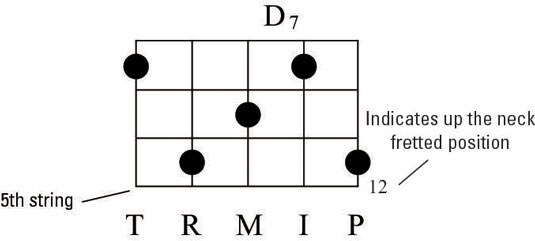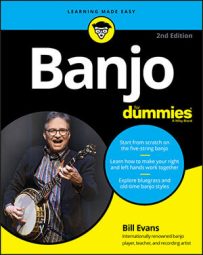Looking for an easy way to remember how to fret a banjo chord with your left-hand fingers? A chord diagram not only communicates which strings are fretted for a particular chord but also where on the fingerboard you put those fingers and which left-hand finger you use to fret each string.
Chord diagrams aren't the same as banjo tablature, which is the written form of banjo music. Chord diagrams show you how to fret a chord with the left hand, but they don't tell you what to play with it.
However, when you play with others, you use chords all the time. Chords are also the basic building blocks of just about every melody, and the following sections help you get comfortable reading chord diagrams.
As you become more proficient, you can fret chords all up and down the neck of your banjo. To represent a chord that's played above the 5th fret, a chord diagram includes a number that usually appears to the right of the diagram — either next to the top fret line or adjacent to the uppermost fretted note in the chord.
This number indicates exactly where you need to position your left hand on the banjo neck (see the figure).
If you need to fret the 5th string as part of a chord, a fifth vertical line is added to the left side of the chord diagram to represent this string. The 5th string is often fretted up the neck with the left-hand thumb, which is represented with the letter T in a chord diagram.


